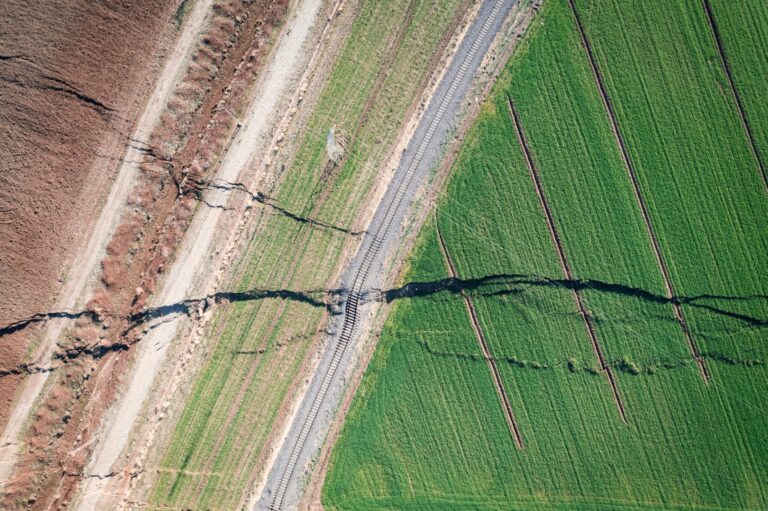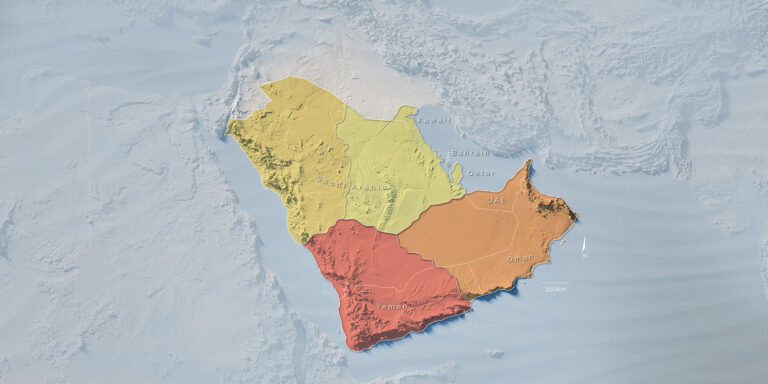Earth Science and Engineering
Weaker pressure systems in the Arctic cause warm winters in the Arabian Peninsula
Investigating links between surface air temperatures and large-scale circulation patterns builds understanding of climate variability in the Arabian Peninsula.

Study of the surface air temperature over the Arabian Peninsula and links to large-scale circulation patterns shows, for the first time, the physical processes responsible for the temperature variability over the Arabian Peninsula. A KAUST-led team has now identified a significant warming trend that began during the 1980s that is accompanied by more extreme warming events.
The climate of the Arabian Peninsula is characterized by short, wet winters and long, dry summers that are among the hottest in the world. These patterns create significant strains on freshwater resources for the region. However, compared with other parts of the world, the influence of large-scale circulation on the variability of the Arabian Peninsula’s climate is poorly understood.
Now, Raju Attada and colleagues led by Ibrahim Hoteit from KAUST, in collaboration with researchers from the Indian Institute of Tropical Meteorology, have studied how the long-term variability in surface air temperature over the Arabian Peninsula is influenced by the global climate.
“Understanding the main physical processes that impact the temperature in the Arabian Peninsula is of great importance,” explains Attada. “Modeling the influence of these large-scale circulation patterns on the temperature variability and trends for the Arabian Peninsula is essential to understand climate variations and to build climate monitoring and forecasting capabilities for the region.”
“For example, variations in surface air temperature are an integral component of climate variability and have serious implications on crop yields, water and energy resources, and human health for the region,” explains Attada.
Using temperature data from the Climate Research Unit (TS 3.22) for the period 1960–2010, the researchers found that the warm (positive) phase of ENSO primarily impacts the southern Arabian Peninsula. It generates warmer temperatures and leads to temperature extremes that exacerbate the arid conditions over the region in summer.
They also showed that the negative phases of the NAO and AO, characterized by weaker high- and low-pressure systems over subtropical and arctic regions, respectively, transport warm air through the Sahara desert toward the Arabian Peninsula, increasing temperatures during winter.
“Our study will help to build advanced climate models that can be used to further quantify regional temperature variations, better understand extreme weather events in the Arabian Peninsula, and make long-term climate projections,” says Hoteit.
References
- Attada, R., Dasari, H.P., Chowdary, J.S., Yadav, R.K., Knio, O. & Hoteit, I. Surface air temperature variability over the Arabian Peninsula and its links to circulation patterns. International Journal of Climatology 39, 445-464 {2018). | article
You might also like

Earth Science and Engineering
Sensing color cues to monitor coral health in the Red Sea

Earth Science and Engineering
Kahramanmaraş earthquake study showcases potential slip rate errors

Chemical Engineering
Unveiling the role of biomass-burning aerosols in atmospheric reactions

Earth Science and Engineering
Feeling the heat across the Middle East

Applied Mathematics and Computational Sciences
Past and future drought patterns across the Arabian Peninsula

Earth Science and Engineering
Fewer major earthquakes for the northern Dead Sea Fault

Applied Mathematics and Computational Sciences
Measuring the impact of desert greening

Applied Mathematics and Computational Sciences




